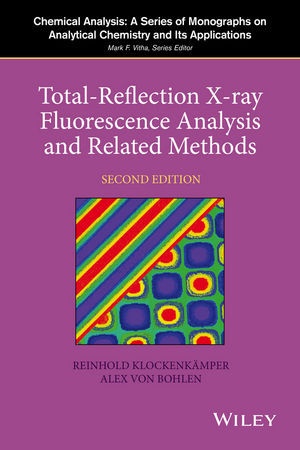Read more
Informationen zum Autor Reinhold Klockenkämper is physicist and was head of the Physical Analysis Research Group at ISAS in Dortmund, Germany. Furthermore, he was Associate Lecturer at the University of Applied Sciences in Dortmund. His experience in X-ray spectral analysis spans four decades and he published over 100 scientific papers and several book articles. He was member of three Editorial Advisory Boards of international journals for many years. In 1988 and 1996 he organized the 2nd and the 6th conference on TXRF in Dortmund. In 1996 he published the first edition of this monograph on TXRF. Professor Klockenkämper retired in 2002, but is currently working as guest scientist at ISAS. Alex von Bohlen is engineer and senior scientist at the Leibniz-Institut für Analytische Wissenschaften -ISAS- e.V. in Dortmund. He is head of the X-ray laboratories and of the scanning electron and optical microscopy facilities. In addition, he is responsible for the beamline 2 at DELTA, Center for Synchrotron Radiation at the Technical University of Dortmund. Dr. von Bohlen has been working in the field of TXRF since more than 25 years, has published more than 120 articles, mostly dedicated to TXRF, and is member of two Editorial Advisary Boards. In 2011 he organized the 14th conference on TXRF in Dortmund. Klappentext Explores the uses of TXRF in micro- and trace analysis, and in surface- and near-surface-layer analysis* Pinpoints new applications of TRXF in different fields of biology, biomonitoring, material and life sciences, medicine, toxicology, forensics, art history, and archaeometry* Updated and detailed sections on sample preparation taking into account nano- and picoliter techniques* Offers helpful tips on performing analyses, including sample preparations, and spectra recording and interpretation* Includes some 700 references for further study Zusammenfassung Providing an accessible introduction into the use of Total-Reflection X-ray Fluorescence (TXRF) Analysis, both from a theoretical point of view and for practical applications, this new edition of Total-Reflection X-Ray Fluorescence Analysis is completely updated and enlarged to emphasize new methods and techniques. Inhaltsverzeichnis FOREWORD xiii ACKNOWLEDGMENTS xv LIST OF ACRONYMS xvii LIST OF PHYSICAL UNITS AND SUBUNITS xxii LIST OF SYMBOLS xxiii CHAPTER 1 FUNDAMENTALS OF X-RAY FLUORESCENCE 1 1.1 A Short History of XRF 2 1.2 The New Variant TXRF 8 1.2.1 Retrospect on its Development 8 1.2.2 Relationship of XRF and TXRF 13 1.3 Nature and Production of X-Rays 15 1.3.1 The Nature of X-Rays 15 1.3.2 X-Ray Tubes as X-Ray Sources 17 1.3.2.1 The Line Spectrum 19 1.3.2.2 The Continuous Spectrum 27 1.3.3 Polarization of X-Rays 29 1.3.4 Synchrotron Radiation as X-Ray Source 30 1.3.4.1 Electrons in Fields of Bending Magnets 32 1.3.4.2 Radiation Power of a Single Electron 35 1.3.4.3 Angular and Spectral Distribution of SR 36 1.3.4.4 Comparison with Black-Body Radiation 42 1.4 Attenuation of X-Rays 44 1.4.1 Photoelectric Absorption 46 1.4.2 X-Ray Scatter 49 1.4.3 Total Attenuation 51 1.5 Deflection of X-Rays 53 1.5.1 Reflection and Refraction 53 1.5.2 Diffraction and Bragg's Law 59 1.5.3 Total External Reflection 62 1.5.3.1 Reflectivity 66 1.5.3.2 Penetration Depth 67 1.5.4 Refraction and Dispersion 71 References 74 CHAPTER 2 PRINCIPLES OF TOTAL REFLECTION XRF 79 2.1 Interference of X-Rays 80 2.1.1 Double-Beam Interference 80 2.1.2 Multiple-Beam Interference 84 2.2 X-Ray Standing Wave Fields 88 2.2.1 Standing Waves in Front of a Thick Substrate 88 2.2.2 Standing Wave Fields Within a Thin Layer 94 2.2.3 Standing Waves Within a Multilayer or ...

